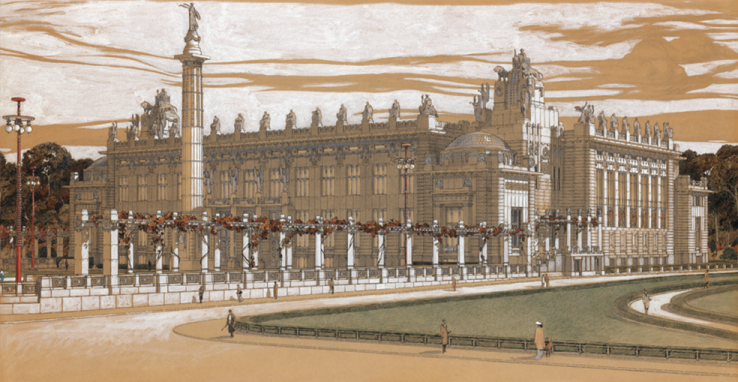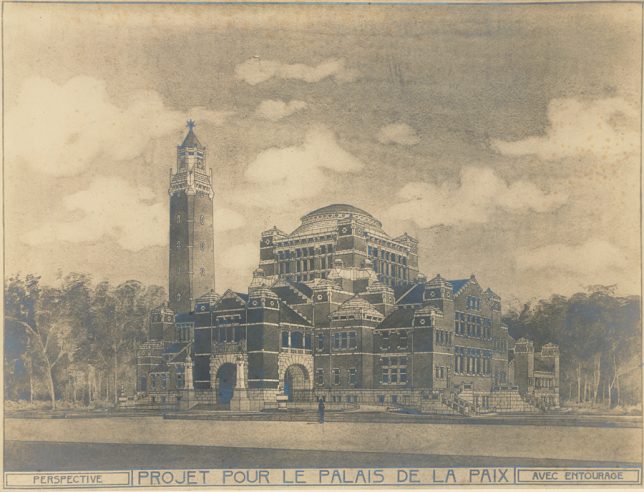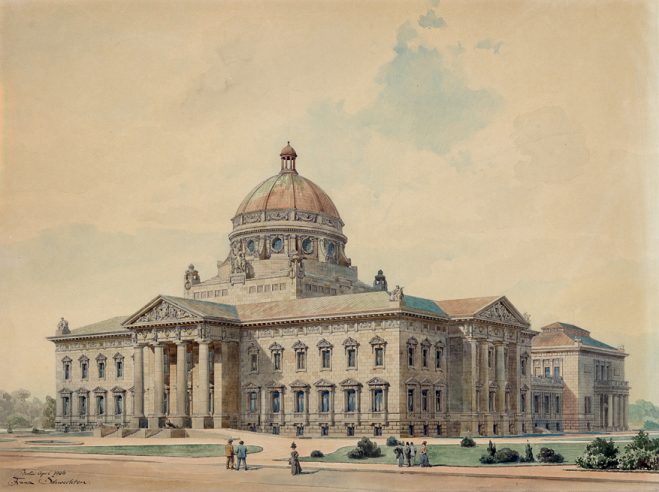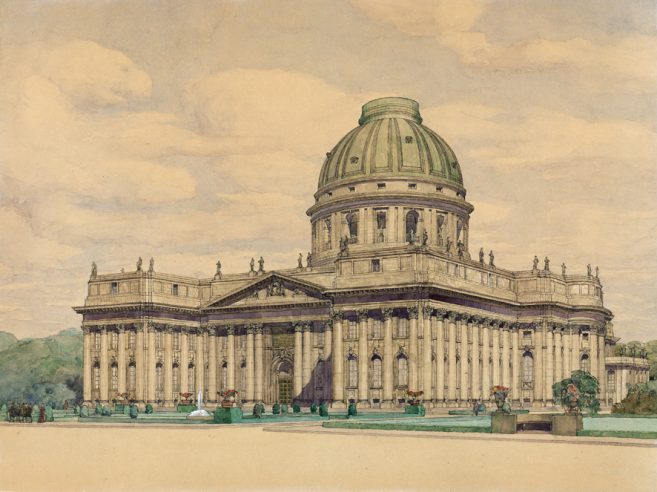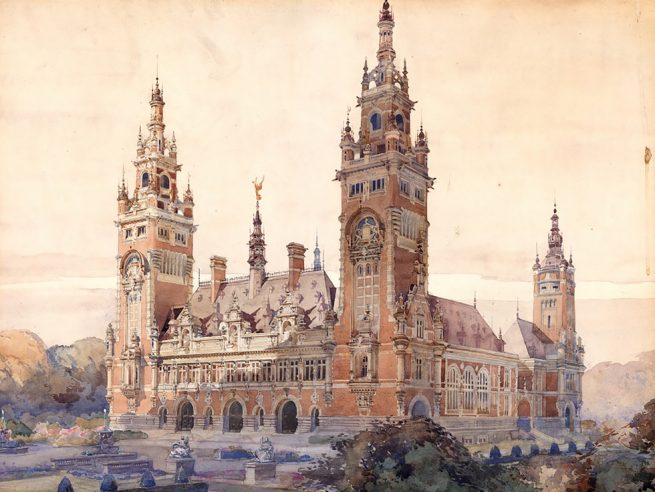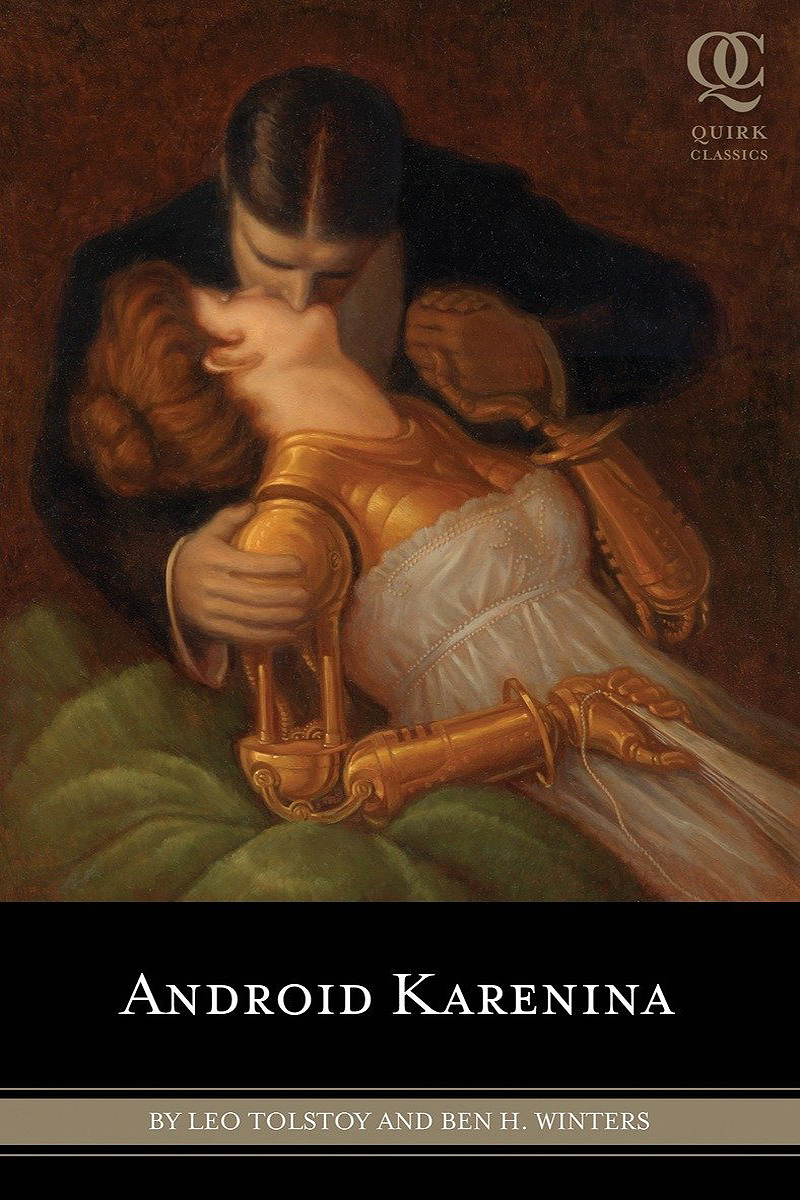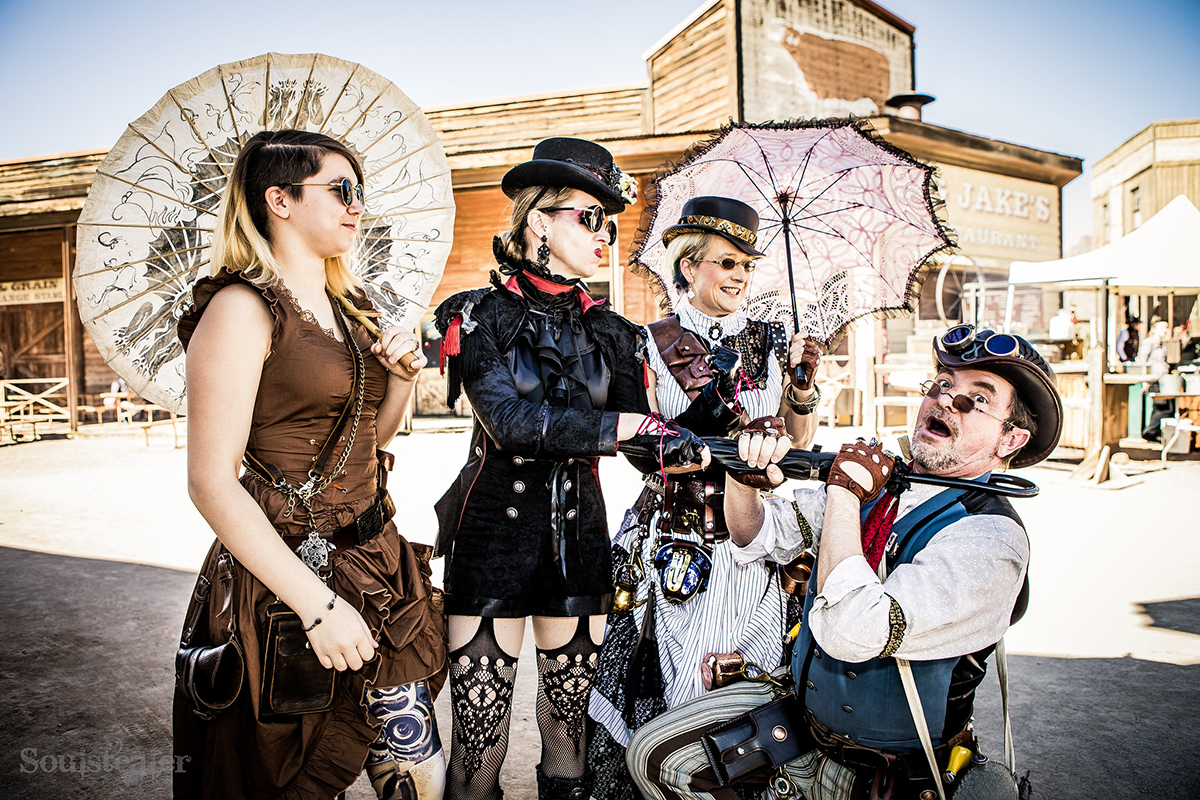In 1903, the American businessman and philanthropist Andrew Carnegie donated $1.5 million (almost $40 million in today’s money) for the construction of a Permanent Court of Arbitration in The Hague. The building would become known as the Peace Palace and eventually house several international courts.
An architectural competition was held for the design. Renowned architects from around the world, including the Netherlands’ own Hendrik Petrus Berlage and Willem Kromhout, submitted ideas. France’s Louis Marie Cordonnier’s Neo-Renaissance palace won.
Cordonnier’s proposal had to be modified to fit the project’s budget. The four clocktowers he had originally envisaged were reduced to two. The law library, which Cordonnier had wished to house in a separate building, was incorporated into the palace itself.

